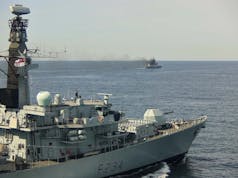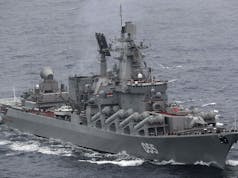Kleos Space Ltd, a space-powered Radio Frequency Reconnaissance data-as-a-service company, has confirmed that the Royal Navy have signed an evaluation contract for Kleos data.
Under the contract, the Royal Navy will have access to Kleos’ geospatial data product: Guardian Locate for evaluation purposes.
“The product delivers geolocated radio frequency transmissions collected over key areas of interest by Kleos’ satellites to complement existing datasets enhancing intelligence, surveillance, and reconnaissance (ISR) capabilities.”
Kleos’ Senior Military Advisor, Air Cdre Pete Round commented, “we welcome the opportunity to work with one of the world’s oldest and greatest blue water Navy’s and look forward to a positive outcome to the evaluation period”.
Kleos’ satellites collect data that is used to detect and geolocate radio frequency transmissions, enhancing the detection of illegal activity, including piracy, drug and people smuggling, border security challenges and illegal fishing.
Its global activity-based data is sold as-a-service to governments and commercial entities, complementing existing commercial datasets.














I’m assuming the Air Commodore is retired and just using his old rank ????
Good stuff, its not just fishermen and people smuggling types that use radio, should be able to pick up navy units that aren’t on the surface too. Suppose it will depend on what frequencies they’re monitoring.
Imagine nothing new in this, surely?
I suspect this is more to do with freeing capacity for sensitive things by shifting demand for detecting commercial transmissions to commercial platforms.
Not a lot of point in using expensive resources to track a fishing boat blasting out RF all over the place!
Its the leveraging of commercial space services which is really the news. The US are doing this too, both for surveillance services and also for communications, where for the latter the US are evaluating both the SpaceX Starlink and OneWeb networks.
SB / GHF – Points acknowledged
I believe (hopefully) a large number of OneWeb satellites were due to go up today
An effectively huge sensor surface area, from multiple satellites, will also boost sensitivity as well as ability to discriminate and localise signals.
This also makes sense of why HMG was so interested in investing. FYI lasting I looked HMG’s investment of £500m was worth about £3Bn on the open market!
What happened to the good old days of a triple six inch and a chief shouting “shoot” down the voice pipe.
I would have thought they would be using the oneweb system in some sort of capacity.
OneWeb probably has enough on its to-do list already with building up the current constellation to the point where it can provide near-global data connectivity and then possibly the addition of LEO GPS capability as a follow-on if a few open technical concerns can be addressed.
I assume RF surveillance needs additional sensors in the satellites, current OneWeb transceivers are designed to operate on quite specific frequencies. Adding extra weight to the OneWeb satellites for the extra hardware required for RF surveillance would not make sense when there is a commercial option readily available.
Whilst the OneWeb constellation is still being grown to full capacity numbers of satellites into orbit is really important and a lighter unit weight per satellite means more going up in a single fixed-weight payload. Right now launches are being done by the Russians using Soyuz. It will be interesting to see how OneWeb’s launch plans evolve. If OneWeb is to have significant military applications, and I hope it will, it seems sensible to try and migrate away from using Russian launch services! Here SpaceX has a big advantage with its Starlink competitor because it has its own extremely cost effective and capable Falcon 9 launch platform that can (and does, about twice a month) put up 60 Starlink satellites at a time and if/when SpaceX gets its next generation rocket to the stage when it can put commercial payloads into orbit, probably in very late 2022 or more likely (in my opinion) sometime in 2023, it will be putting up 400 satellites in a single launch. That compares with 36 satellites per launch for the current OneWeb Soyuz launches and a single OneWeb satellite is about half the weight of a single Starlink satellite (~150kg Oneweb vs ~260kg Starlink). I do hope OneWeb has some solid plans for evolving its launch strategy. I wonder why it doesn’t use Ariane. Too expensive maybe? AT one point it was going to use Virgin Orbit but that all went horribly wrong and VO is suing OneWeb for $43m (https://orbitaltoday.com/2020/09/26/virgin-orbit-expects-43-million-from-bankrupt-oneweb-for-cancelled-launches/). That’s a real shame since at some point I believe that VO might launch some missions from the new Cornish space port. The current plan for that is “by early 2022”.
Am I right in believing the “Pusher ” CDDA arrays like the one in Cyprus were/are used for this type of thing?